Don't wanna be here? Send us removal request.
Text
Colour psychology
The Psychology of Color and Graphic Design - Platt College San Diego
'Colour psychology is the study of how colours determine human emotions and behaviours.'
In regards to my card game, colours I chose reflect of its main inspiration, the Vectrex. A sleek and elegant black base colour with the accented light blue colour for text and images to reflect the light blue sheen of light that the vectors give off.
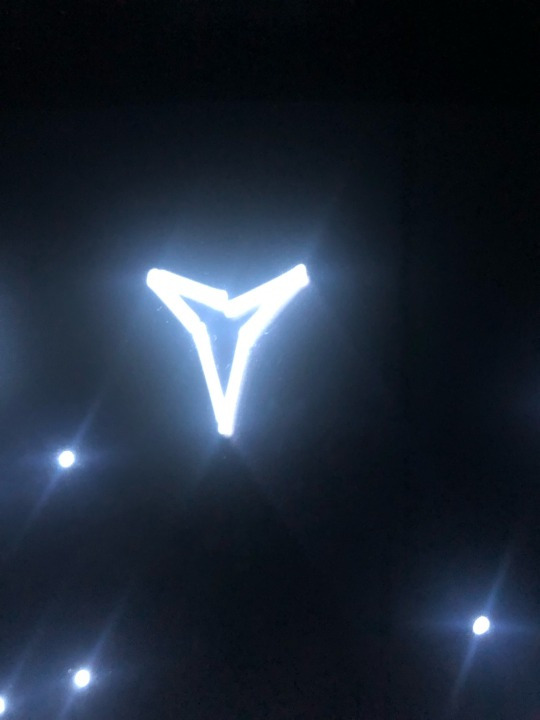
These combinations of colours give the game a level of simplicity, similarly to the games available for the Vectrex console. The choice of blue also caters to stability in some respect, how vectors are all straight, connecting lines. (ironically the image above isn't exactly' connected', I took the image myself and the Vectrex needs new integrator caps.)
0 notes
Text
Physical Cards
Finally got some printed cards, i originally printed then on regular paper back to front but that was tremendous fail. the second time i got my hands on some decently thick card and put the cards onto a properly aligned printing 'format' but not back to front this time, which was a good thing because even though the card was printable it didn't work perfectly, but it adds to the detail nonetheless.

Base Set 1

Ranged Orientated Set 2

Tank Set 3

Glass Cannon Set 4

And this is the back for all the cards, slightly different misprint patterns on each one, but again, adds to the detail.
I did also print the numbered damage counters but with my current storage method they are a bit tedious to get out and put back in without creasing or folding them, but they are to similar quality of these cards, just a little smaller.
0 notes
Text
Game Anglia Festival
recently I went to the Game Anglia Festival with my class to showcase the games made for our previous project, it was an interesting experience that gave me a bit of info about presenting your own game, to some extent...
the events initial industry talks were very informative with describing the different aspects of withing in the game industry.
at first I was a bit nervous about it but when it came to actually presenting it, I was clearly over-exaggerating my nervousness.
I managed to oversee a few people play our game, though nobody got incredibly far since the files were incorrect and instead of a demo experience, it was an unfinished prototype. I've got no idea how it was possible considering I was the one to submit the original files and they were the correct version. it was annoying but it was something I couldn't do anything about, so it ultimately made it tough to gauge each players experience since they quit before trying it properly because it was a broken prototype.
looking past what I think was an almost complete failure on our presentation, I did get the chance to play other peoples games. It was reminiscent of games like papers please, in a way. you were in space and you had to look over documents of different aliens, checking for discrepancies on original copies of the document and duplicated copies to earn money to furnish your ship. It was short but that was mainly because there wasn't a lot to do in the game necessarily, there were 2 documents you could check over and once they were done, that was it, no more work to do for money. it was short and sweet, and the gameplay mechanics were the focus rather than the gameplay itself.
overall the festival was a lot of fun for me, not only to try the various games but to also get a deeper insight to how games can more 'exposure'. Though I would say the venue was a bit small, taking place in a small café/lounge type area inside a university, which made it a bit cramped in the early hours.
0 notes
Text
Close to End Review
I managed to get a lot of what i wanted to do for this project done to be fair, I did hope to get more cards in but that would've taken too much time and I've only just finished all 4 five card sets so any more would've been too much.
my plan for the final week is to get a physical set of the cards to use and to some testing for the games general mechanics and how the work with each other.
0 notes
Text
Card Designing #4
The final 2 sets are finished now, 4 sets for 4 potential players.
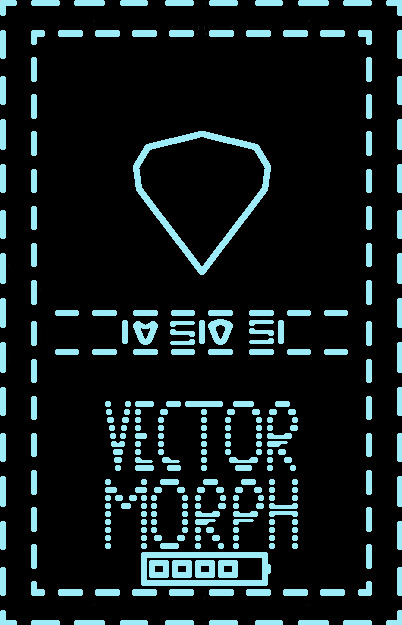
the first is a card that is more focused on armor, without dealing lot of damage. the strategy I thought of when making this was to have something that could outlive its opponents.
Its design is somewhat reminiscent of a shield, which i thought made sense considering its the tankier card out of the 4.

mods are quite simple, similarly to the first base card, this has a mod that boosts health by 2, but has the armor upgrade give a boost of 5, I was considering boosting the AP cost for it but i figured the low damage output made up for it.
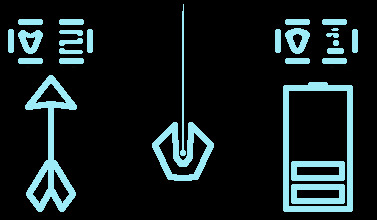
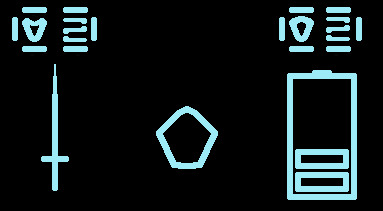
The attacks, they're the weakest out of the others and both cost 2 AP, might be a bit too underpowered but the only way i will be able to find out is to test it out.
I struggled for a while to think of what the last card could be, i had all the basic types that made sense down so it was a bit tough.
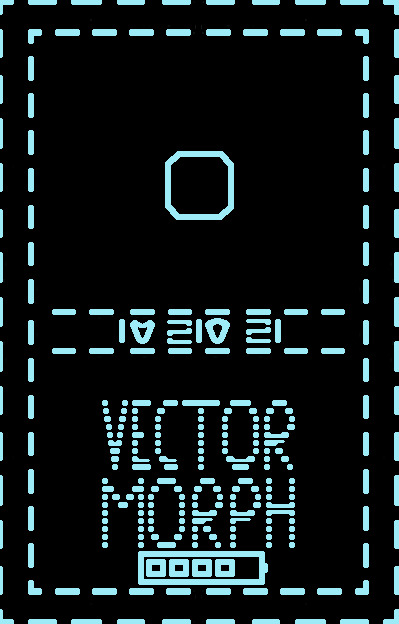
This card is basically a glass cannon, deals high damage but has the lowest armor and health of the lot. the design might be a bit boring but its still different from the others.
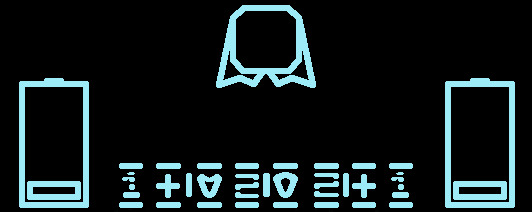
the upgrades complement its 'glass cannon' nature further, with both upgrades merely boosting the stats by 1,but also only costing 1 AP. I also decided to make both upgrades identical to go with the shapes simplistic appearance compared to the other cards.
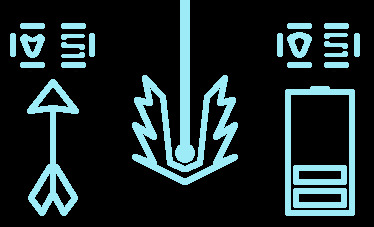
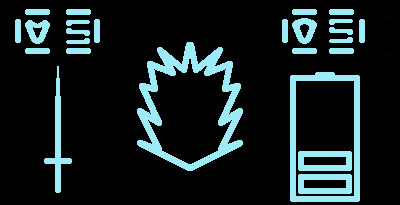
Both attacks are basically identical, at the moment there isn't any type of reason to choose between the different types, that's something for if i ever take this idea further, but they cost the same again, which could be problematic if you're waiting to regain the AP to use the attack again.
i think its a fairly tough card to use and if you don't use its cards strategically the you'll probably end up losing first.


These are some little extras, the right is a bunch of number covers for when the player takes damage, rather than having counters that the player has to memorize how much health is left, like in Pokémon, this makes it easier by just calculating the amount you have left of a specific stat, then covering it over with the appropriate number, there's 4 each starting from zero and going to five, both for health and armor. the right is a simple card back design, i was thinking putting a shape on it as a sort of 'mascot' type thing, but i haven't decided on what to put there at the moment.
0 notes
Text
Card Designing #3
Got 2 attack cards designed, simple but effective.


2 different iterations for different attack types, ranged and melee. i also managed to get a stamina/ap system to work well, shown by batteries, it indicates the amount that is used after a turn for the chosen attack. The base card has 5 AP, and each mod also costs AP which is used when its placed on the matching base card.
I've also worked on the second 'set' using a similar approach with inspiration from vectrex games on one part of the design, then my own unique one on the other.

Slightly less AP and armor, the idea for this is to be focused on aggressive play, more attacks rather than upgrades, though they are available. This is the design based on something from the vectrex, this case is the lvl 1 MineStorm mines.

The upgrades were a little challenging to thing of, since it was a relatively straight and basic design. I settled with a sort of 'inner padding' and 'outer armor' idea. the inner padding helps with health, though not by much considering its ideal playstyle to get as much attacks in as possible, though the armor is quite effective but costs more ap than the base card's armor upgrade, and doesn't allow it to use its powerful ranged attack.


The ranged attack is mainly used for when the opponent(s) have little to no armor, ideal for finishing the job fast and effectively, while the melee is more focused on the armor but still does a solid amount of damage if the user locked themselves out of using the ranged attack with the armor upgrade. This is the unique design i made myself.
A side note that is semi-related, I've realized that it was a smart mode to have the cards all separate, since with multiple players, you could choose who you'd attack by facing the attack card towards the player of choice.
0 notes
Text
Specialist Research - Fusion In Cassette Beasts
Fusion is one of the main Mechanics used in Cassette Beasts, it allows the Combination of 2 characters health and moves, allowing for a tank that can withstand and apply a lot of damage, though restricts them to one move per turn instead of the usual two.
The relevance of this with my game is the aspect that you're essentially fusing multiple cards into one master card, gaining stat boost, and possibly special abilities if this is ever taken further than a college project with a restricted time-frame.
Though the limited cards restrict the type of gameplay I'm talking about, the game could become more strategic with more cards, planning each turn carefully to use the mods to their upmost abilities, timing when to use them to gain the upper hand in combat, like CB does with the fusions in the game.
0 notes
Text
Card Designing #2
Finally added the health/armor bar to the base card, doesn't look bad and also acts as a sort of bar to separate the card from the title.

I also managed to work on some mod cars to go along with this 'set', only 2 for now since I don't want to over do it nd waste time I could use making the other sets.

All that was needed was to copy the pre existing border, cut out the right side an smooth out any sharp edges, this was also don't for the left side, simple copy paste.

this shows both the 'mods' on the shape, the left side outer layer mod is to improve health, while the charge box on the right side improves armor.

it looks a bit odd, with the misaligned cuts but that is intentional, since the mod cards are intended to overlap, to the extra border area is so that you can line both cards up more precisely. the title was also moved to the side, to fill up space but to also make room for where the attack cards would go.

this is the final concept for the base card w/ mods. doesn't look too bad, the attack card is technically the last card needed for this to be complete 'set', once that's done ill start designing the other sets
0 notes
Text
Card Design Improvements
Since the concept blog i have improved the design of the general card itself, moving from the regular brush to a sharper pixel brush


as you can see I borrowed a bit of inspiration from the Vectrex boot screen graphic

The text font was also custom made by to replicate how the Vectrex draws text in a series of dots rather than straight lines. 'Vector Morph' was originally a placeholder name though I've been thinking and it seems like a fairly accurate representation of what the game is about.
0 notes
Text
Specialized Research - Vectors
My main design choice for this project is the inspiration from vectors, mostly how they were used in video games the is still generally relevant outside of video games.

The simplistic raster graphics fits well with the requirements of this project, not having something that is intricately designed is better for people who have worse sight since they will be able to more easily distinguish different aspects of the card.
The earliest time vectors were used in a video game was in 1979 with the release of Asteroids.

This is technically also inspiration for my card game since its immense popularity lead to the home console port developed by GCE for their Vectrex console. The games use of more basic designs for the 'mines' complements the design choice for my base cards.

I like to think that this choice also makes my game unique in the way that there aren't many/if any card games that combine both the graphical design and the gameplay style in the same package.
0 notes
Text
Project Proposal
I will be creating a TGC styled card game, where you fight other players with different sets of cards you would be able to collect (if it were a real purchasable card game)
Since it's a card game the control system will rely on the players basic motor functions, with moving hands to pick up and place cards being the one main ‘control’ system for the game itself.
The 'control system' is going to be a card styled game, i thought i would choose this given the fact that card games are some of the most simple games to play from a control standpoint, so almost anyone will be able to play the game. The main inspirations for this idea are the Pokémon TCG, with the general card game idea being taken inspiration from in this idea, and the game ‘Cassette Beasts’ with its fusion mechanic, allowing anyone to merge with their companion, to generate a more powerful, and unique beast to fight as. A few considerations I have made is the fact that some people might not be able to see, therefore not be able to tell what the cards are, among the others I have chosen to include this consideration because I think it could overall improve the actual game itself, my pushing up the different important parts of the card, like the icon and putting braille over the numeric indicators (health and such) will make the game more accessible, but also a bit of a 3d aesthetic, potentially.
The only things I would need hardware wise would probably be black cards, white pens, and something to indent the required areas. There could easily be more to list but that is the bare minimum that is needed.
The game starts by each player placing their chosen base card, which include some base stats for the card; health, armor and endurance. After that the game properly starts. Each player takes turns picking up and placing cards with the main goal of being the last one standing, this involves the players using modifiers to upgrade their base card’s stats, and using attack cards to deal damage. This all revolves around the cards stamina, with certain mod cards lowering the cards endurance by a different amount, which allows for less powerful attacks, with the trade off of boosted health and/or armor to withstand the opposing attacks. Each base card has varying stats, some with boosted health, boosted armor, boosted heath AND armor, or reduced of the 3 variations, each with their own uses, with the reduced stat cards having a higher endurance for more selection of mod cards, and the increased stat cards having a more offensive aspect, with getting to the fight as fast as possible before many mod cards can be placed.
The game will be turn based, with the players being required to place a card to continue their turn, unless they indicate otherwise, once every player has had a turn, the cards confirm the cards that have been placed and use them, with stat boosters being activated first, then attack cards.
This idea caters to the card game ‘control system’ I have chosen since it's the games main aspect, it could be made in a digital space, though it wouldn't have the same engagement or accessibility that the physical variation would have.
The endurance mechanic isn't necessarily needed, it's mainly used as a way to stop potential loops of healing and stacking of extremely powerful mods, which would overall detract from the game's experience, and ruin the game for others playing.
I learnt that card games could be some of the most accessible forms of games to play, only relying on the players ability to pick up and place cards.
Some considerations to accessibility have been referenced already but to expand on that, if someone were unable to move much, this could stop the player from even playing the game, this could be aided by having special sets that are pre merged, with numbers marking different turns, which would need to be set at the start of the game like any other base card, then the turns would be taken according to the numbers listed, this requires minimal movement my the player and still allows them to take part in the game itself.
Another consideration more focused on the game itself is the design choice to stick to a Black & White color scheme, with is not only a design choice reminiscent of early vector arcades, but also a way to work around having a color scheme that isn't able to be seen by a specific type of colorblind person.
A reasonable adjustment I will have to make is adding braille to the numeric values of cards, and indenting other areas that are also meant to be identifiable. This can also be achieved by a special set of cards that don't have the numbers, but only the braille, so that if there are any problems with making the original sets friendly to blind people, then that can be a secure backup option.
0 notes
Text
Game Concept 3
This idea revolves around the use of a ball mouse.

this will include the player using the trackball to move around a ball of slime, solving puzzles and exploring different rooms.

the gameplay and control mechanic will work quite well given the player will be controlling a ball, which will give a better gameplay experience since they player would feel like they are actually moving the ball around. The game will use a 2.5D styled camera, and would follow an aesthetic similar to some of the Legend of Zelda games that utilize a similar angle, a link between worlds is an example of this.

this idea would have me focusing more on developing the game itself, getting a functioning prototype with a decent game loop, after that I will be able to focus on the graphical design of the game itself.
0 notes
Text
Game Concept 2
My second concept caters to less about the physical game and more computer based, with a small twist.
The game would have a similar aesthetic to a majority of the holotape games from the recent fallout games, having a green hue and CRT styled screen effect

the idea would be something similar to a fallout styled 2D sidescroller/platformer, where the player would progress through the levels collecting gear and items to use against foes.
this game unique aspect is going to be the prefered controller to use for the game...

the Pip-Boy 3000 Mk V replica :) I've had a look at its control scheme for being connected to computer and this type of game would be more engaging than the others, but still offer a degree of challenge with this new 'controller'
for this idea i would have to focus more on the game rather than experimenting with the controller since I don't have one because of the shipment delay, and it is likely that I will get it once this project i over, which is a shame.
youtube
this video shows it being used to play a numerous amount of different games, but it also shows that sidescrollers are challenging because of the controls they use, which is something i will have to work around, especially with the restricted control layout.
0 notes
Text
Concept Generation 1
My first idea is something akin to a TGC, like Pokemon for instance.
the player would start off with one base card, with an option between a couple starters with different stats, examples of this would be a balanced card with similar stats, a card focused on defensive stats, and one more focused on offensive stats.
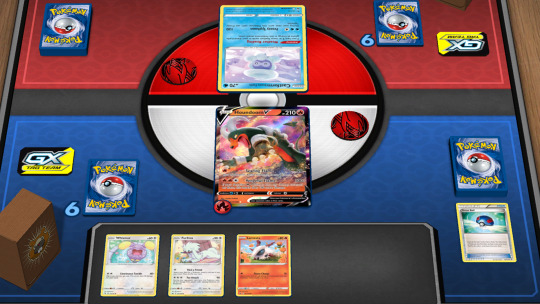
with this one card placed they then, during their consecutive turns, place cards from their 6 card hand to 'upgrade' their base card with different improvements that can benefit them, or negatively effect the opposing player/players.
the base cards will have areas dedicated to the 'upgrades' to avoid each player having too many of them, and to allow a health and armor stat that isn't blocked. Keeping those stats visible will be essential since there will also be small 'chips' that each player has for different situations, if the player takes damage past their base health, they put a negative chip around the health meter, indicating its the health minus the amount that is shown, or a positive chip for upgrades that improve health. The same goes for the armor stat. with the armor stat, the players must deplete those stats before they take real HP damage, when the any of those stats hit 0 then the player puts a / chip, signifying that the accompanying stat is no longer in use.
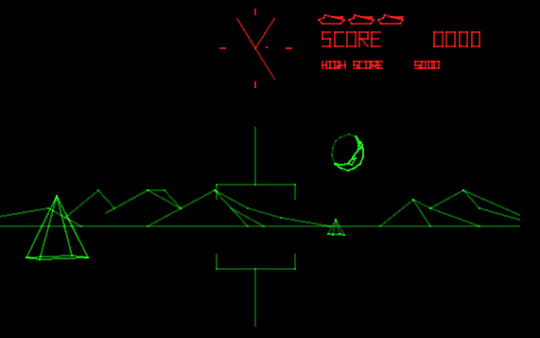
The designs will be basic, being inspired by vector graphics of the mid 80's, from things like arcade games and some select home consoles. This allows for simplistic yet stylish cards that will still look appealing when equipped with the various upgrades.

An early concept design for a base card, its simple and the general idea of what i want the cards to look like.
0 notes
Text
Initial Research - Home Console Controllers
youtube
The Power Glove released for the NES and was an interesting concept but not given the amount of attention it realistically needed, With VR development in its very early stages, the Power glove got quite a large amount of attention for its unique control mechanics, though it fell short with little to no games being released for it and having hard to use controls, which resulted in it not selling very well. For the time the Power Glove was released, it was much easier to just play the games you had with controllers that they were actually designed for and played well on.
youtube
The Zapper for the NES was packaged along with Duck Hunt in an 'Action set' version of the NES which included the regular aspects of the NES but with the addition of the game and the new gun styled controller, The controller was a first for children to be able to play at home rather than playing at an arcade and gave a boost to immersion on some sense since they would be actually shooting a 'gun' rather than mashing a controller button.
I feel that the zapper could've benefited from some sort of reload button for games that could have you reload, since that would further solidify the immersion into the game you would be playing. With actually playing those original games with the original hardware, it would require you to either use a CRT monitor, or to completely replace the insides of the gun and/or cartridge to detect the light on LCD screens, which costs money and time.
youtube
The Jogcon was a steering wheel controller the size of a normal PlayStation controller, mostly being used for racing games like ridge racer and v-rally. It included force feedback in the 'jog wheel' built into the controller, which was the first PlayStation controller that featured it.
When it was released, I'd say it was one of the best controllers to use for compatible racing games since the force feedback would make it much better to drive with its auto centering and response to collisions and terrain, although it falls short with games that aren't compatible since the wheel/dial wont auto center so it becomes tedious to frantically turn round different corners in short succession.
youtube
Packaged alongside steel battalion, this 'controller' is especially unique, considering its more of a control board rather than a holdable controller.
the player was required to manually start-up their mech through the process of pressing various buttons and flicking switches, this gave the game a more bespoke feel with its controller corresponding with different actions within the game itself, where some buttons would light up indicating for you to press them.
Though this controller ultimately makes the game more realistic as you are controlling each and every aspect of your mech, the game will get confusing if the player doesn't know what they're doing, and this was back when games had manuals and little to no in-game tutorial to follow so if you didn't have that manual you'd essentially be stuck nd left to figure the buttons out for yourself
0 notes
Text
Initial Research - Arcade Games
youtube
The Main objective of Atari's 1983 Star Wars arcade was to destroy the Death Star, much like the first film, with increasing difficulty every time they successfully destroy it.
The games unique aspect was the inclusion of a quad-buttoned yoke controller, 2 trigger buttons and 2 thumb buttons, each firing a separate laser.
I think the controller was the best it could be for the time, though from an accessibility standpoint I don't think the arcade or the controller was the best since it required the player to have good hand eye coordination and decently fast reaction times, which not everyone has.
youtube
OutRun is another classic arcade game, this has the player racing at high speeds down public roads avoiding traffic and such, with the objective being getting to one of 5 endings.
Some of its unique features was the force feedback in the wheel of the larger cabinets, as well s motion simulators for the seated cabinets. The arcade's system board was also unique by being made specifically for the game, rather that being reused from existing boards.
These features made the arcade feel unique and give it some more realism, like you were actually racing down highways at high speeds in your convertible testarossa, rather than standing in front of a CRT fiddling with joysticks and buttons. This is another game i think that people that have slow reaction times and/or difficulty moving would have a relative amount of trouble trying to play and complete.
youtube
Time Crisis 2's main objective is to stop the launch of the StarLine satellites and Stop Ernesto Diaz's plans for 'world dominance'. one of the games unique features, not seen in its predecessor, was the ability to play with a second player, having them take control of a second character who would normally have been controlled by AI.
Along with the light gun controllers, the co-op experience of the game made it twice as thrilling, being able to coordinate attacks with your partner, all while trying to beat their score. If the game had different controllers i doubt it would've been as fast paces, with a regular joystick and buttons for example, the joystick would have to be quite sensitive so be able to flick to the different enemies otherwise it would be very clunky and slow.
On top of this i also think having the controller to hold would be a bit better for accessibility, since rather that having to stand at a cabinet someone could easily sit down in front of it, and all you need to do in the game is point, pull a trigger, and press a paddle.
youtube
After Burner Follows the player shooting up enemy aircrafts in their F-14 Tomcat, utilizing machine guns and heat seeking missiles. The arcades controller was quite unique, featuring a design akin to that of a fighter jet's cockpit flight stick, with controls for the guns and missiles included on the stick.
The motion simulation, similarly to OutRun, gave the game another level of realism, making you feel every turn and hit you take. With the controller combined it felt like you were actually flying a jet and shooting up enemies at intense speeds. Just like racing arcades, this game wouldn't feel as great to play with just an ordinary joystick and some buttons, as well as this, i also think that the game lacks some of the accessibility with the fact that the jets are fast and almost require decent awareness to react to.
0 notes
Text
Grid Systems - Video Games - Isometric
youtube
Fallout 2 Is an RPG game that uses a very similar perspective to isometric though very slightly different. Trimetric. Though this is meant to be specifically isometric, the difference between the two are so small, and most places list fallout 2 as isometric anyway. (and its something I can talk about quite easily ;b )
With the combination of both the map grid used for the fast traveling and the individual grids used when at a location where the player can freely move around, gives a good combination of the trimetric grid style and the more traditional square grid style. with the square grid used for fast traveling, It lets the game have special encounters unique to certain areas of the map which make discovering them that bit harder. With the trimetric grid used in the interactable environments, the grid is more useful (I think) in the combat, since every move to a different tile would count as one use of the players AP, which ties in tot the turn-based nature of the game. Like most of the games I've mentioned, the movement is 4 directional, but the trimetric camera perspective makes things move more diagonally, rather than going straight in one direction, it involves the characters zig-zagging towards their desired location, whether that's to attack or to get the player to follow them.
youtube
Q*berts isometric movement is thanks mostly thanks to the games designers wanting to replicate 3D graphics, this gives the game a bit more of a unique style that probably wasn't seen a whole lot when it was first created. the games relatively compact play space, along with the additions of enemies to avoid gives the game a varying level of difficulty based on what level the player is on, this also challenges the player by testing how well the can learn movement styles and such as to not be trapped by the different enemies.
Q*bert moves on a diagonally placed 4 directional joystick, which makes sense given that the game is in a style that there isn't really any way to move diagonally, or in this case, in straight lines.
youtube
The Battle of Polytopia is a 4X turn-based game focused on the strategic nature of the genre and the growth of the players own tribe.
The player moves units to explore a randomly generated map hidden under clouds to find resources and battle the enemy tribes in the match, and the grid format allows movement and mechanics to work in a very simple way, which is good for phones to be able to play as well as computers.
This game uses the grids in a somewhat similar way to fallout 2 which I mentioned above, how it uses a grid the player has to move across to explore and fight others in a turn based way, having the player think about each move they make and how their enemy could move in accordance to that.
0 notes